Many projects fail because of small installation errors. These errors waste time, cost money, and damage the final look of the lighting.
LED strips are flexible and affordable, while LED profiles add durability, heat control, and a professional finish. Choosing the wrong method or making installation mistakes causes peeling, overheating, glare, or early failure.
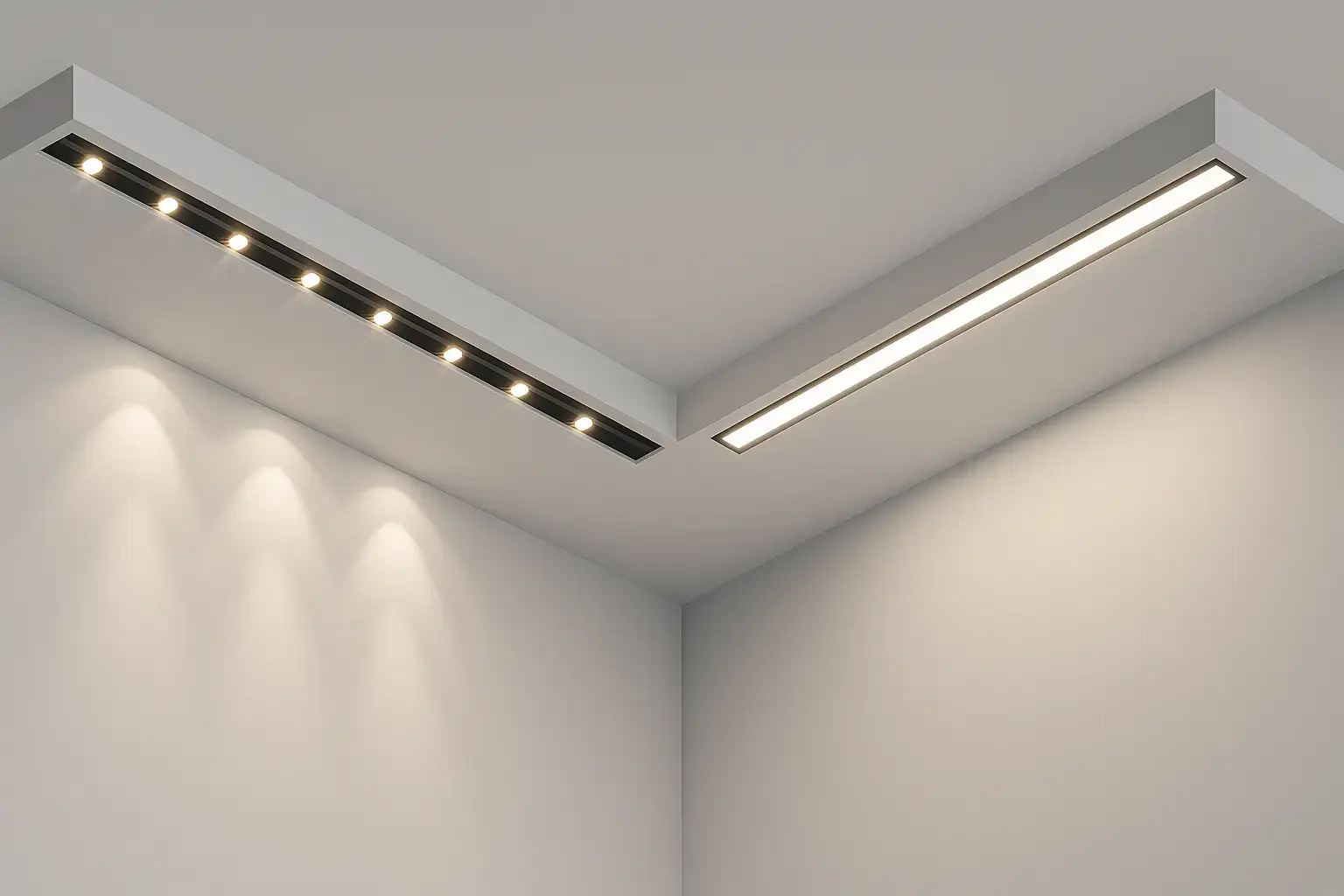
I have worked on many projects where lighting looked good at first but failed soon after. The problem was never the product itself. It was always the installation. Let’s look at the differences, common mistakes, and how to avoid them.
LED Strips vs LED Profiles – What’s the Difference?
Many designers and contractors confuse LED strips with LED profiles. They both use LED tape, but the way they are installed makes a big difference.
LED strips are low-cost and easy to install, but they overheat and look unrefined. LED profiles require more effort and cost, but they provide better cooling, smoother light, and a cleaner finish.
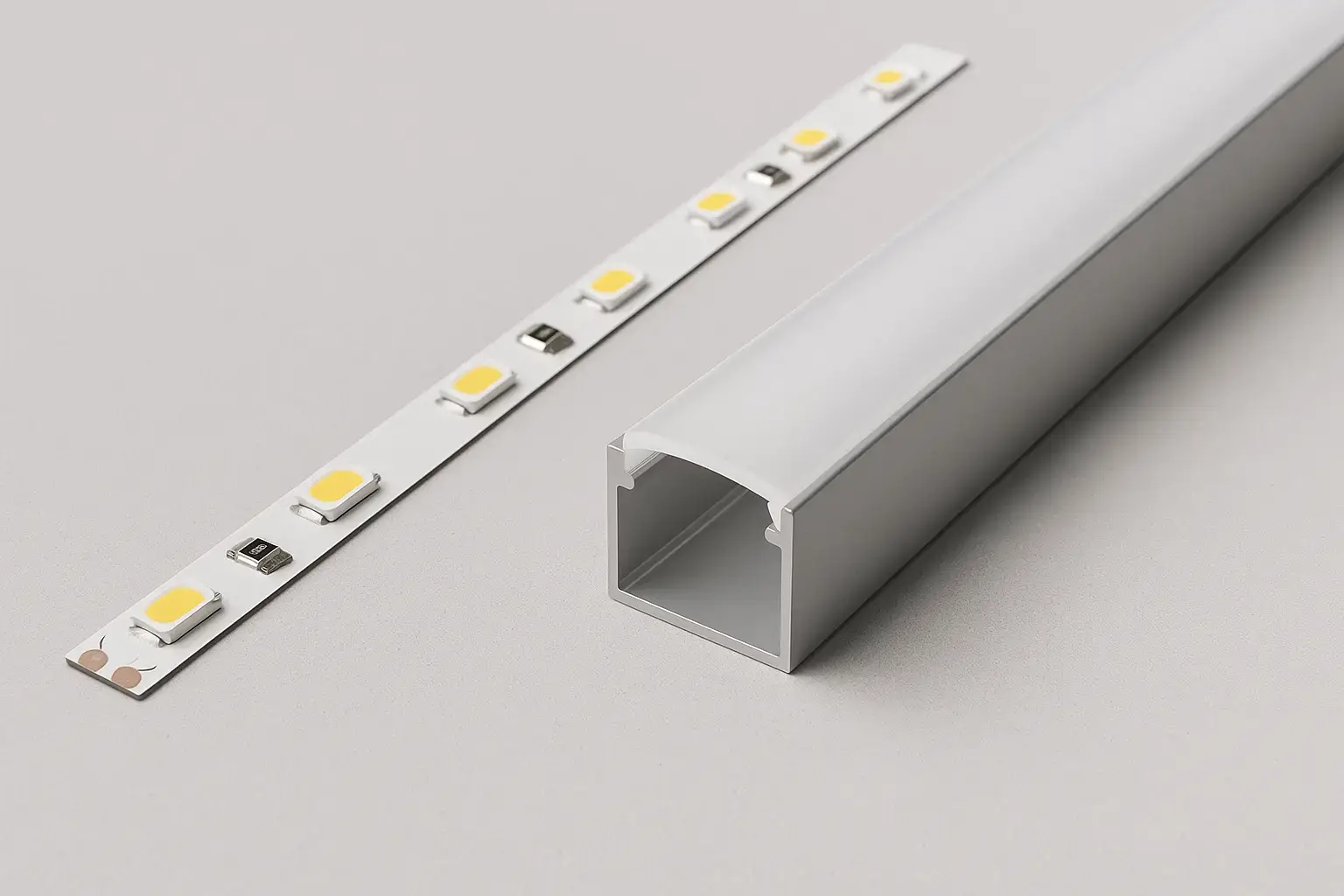
Strips and Profiles Compared
LED strips are flexible, adhesive-backed light sources. They can bend and stick to almost any surface. But they lack heat management. They often peel off or burn out early. They also show visible diodes that create glare.
LED profiles are aluminum channels that house LED strips. They use a diffuser cover to hide the LEDs and soften light. The aluminum acts as a heat sink, which extends lifespan. They look cleaner and more professional in exposed spaces. The upfront cost is higher, but the long-term value is better.
| Feature | LED Strips | LED Profiles |
|---|---|---|
| Installation | Peel & stick (easy) | Requires mounting & fitting |
| Heat Dissipation | Poor, strips overheat | Good, aluminum acts as heatsink |
| Aesthetic | Visible diodes, glare | Diffused light, clean finish |
| Durability | Can peel/fall over time | More secure, longer lifespan |
| Cost | Cheaper upfront | Higher upfront, but longer-lasting |
Common LED Strip Installation Mistakes (and Fixes)?
People often think LED strips are foolproof because of the adhesive backing. In reality, most strip failures come from small but avoidable mistakes.
The most common mistakes are mounting on dirty surfaces, skipping aluminum channels, using the wrong power supply, weak connections, and skipping diffusers. These issues cause peeling, overheating, flicker, or glare.
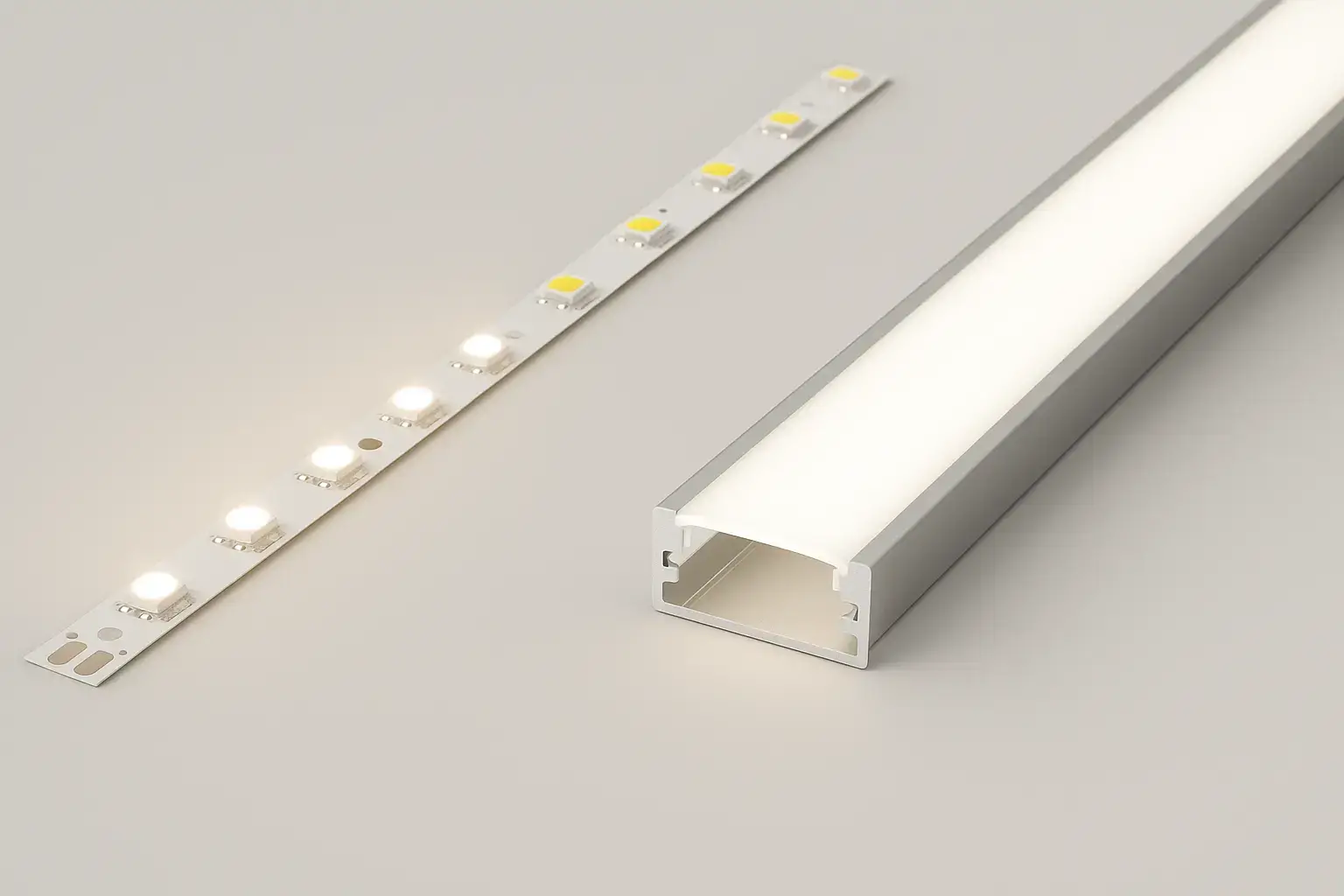
Typical LED Strip Errors
I have seen strips fall within weeks because the surface was dusty or uneven. Adhesive works only on clean, smooth areas. Mounting directly on wood or drywall traps heat and causes early failure. Aluminum channels act as heat sinks. Skipping them can cut lifespan in half.
Driver sizing is another problem. For example, a 5-meter strip rated at 14.4W/m draws 72W total. It needs a 100W driver with headroom. Many people use a 60W driver, which causes overload and flicker. Oversized drivers also stress connections and cause premature failure.
Connections are another weak point. Cheap clip connectors loosen with time and create arcing. I prefer solder joints or locking connectors. Diffusers are often ignored. Without them, LEDs are harsh and visible, especially on glossy surfaces. Diffusers soften light and protect strips from dust.
These mistakes usually come from rushing or cutting costs. Careful planning and proper materials save time, money, and frustration.
Common LED Profile Installation Mistakes (and Fixes)?
LED profiles look more professional than bare strips, but they require precision. Poor handling can ruin an otherwise high-quality project.
The most common mistakes are choosing the wrong profile size, cutting poorly, installing loose diffusers, blocking airflow, and misalignment. These errors create gaps, overheating, or uneven light.
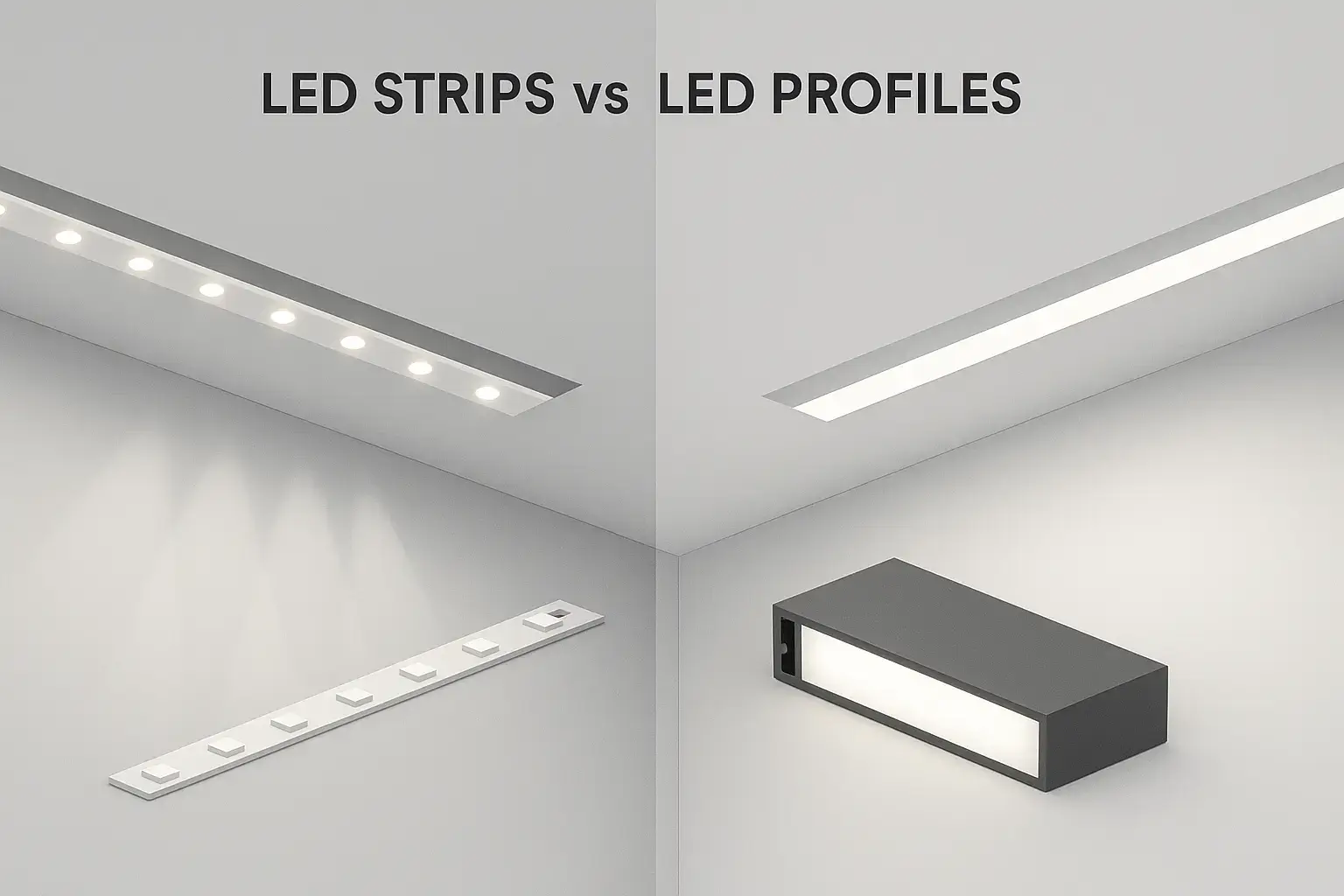
Typical LED Profile Errors
The wrong LED aluminum profile size is a frequent mistake. Sometimes the strip does not fit, or it sits too loosely. Measuring before ordering avoids this problem.
Cutting is another issue. Profiles often meet at corners. Poor miter cuts leave visible gaps. Light leaks through these joints and breaks the clean look. I use a miter saw or cutting jig for accuracy.
Diffusers are also tricky. If not snapped in correctly, they loosen or bend. Dust then collects inside. Ventilation is also important. Profiles act as heat sinks, but only if air can move around them. Sealing them in tight cavities removes this benefit.
Finally, mounting errors matter. A crooked profile throws off light distribution. I use laser levels or chalk lines for alignment. Precision is what separates a professional job from a poor one.
LED Strips vs LED Profiles – Which Should You Use?
Contractors and clients often ask me which option is better. The answer depends on where and how the lighting is used.
Use LED strips in hidden or temporary areas. Use LED profiles in visible, high-traffic, or long-term projects. Profiles are always the better choice when the light is exposed.
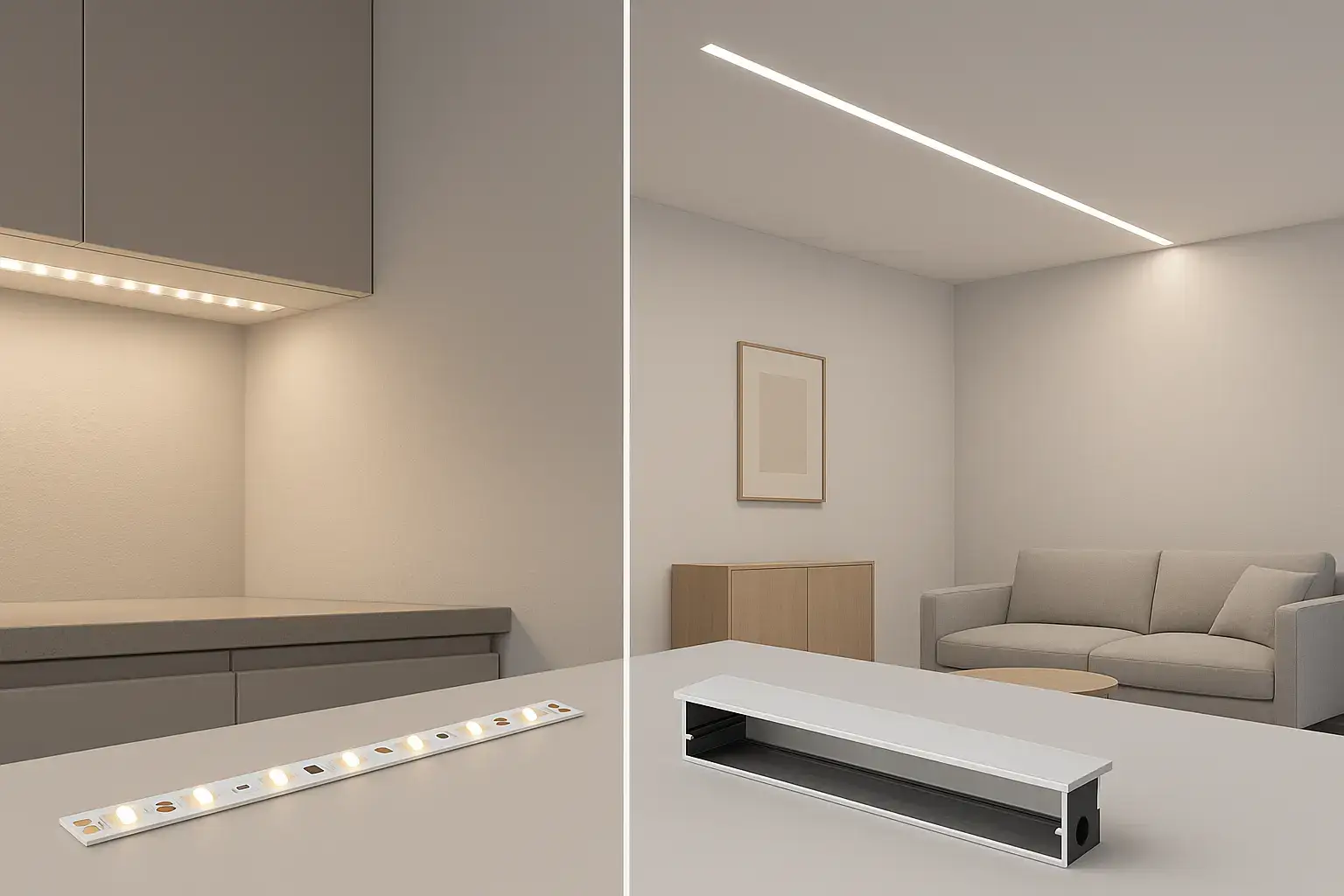
How to Choose
LED strips work well for accent or hidden lighting. They are fine for under furniture, inside cabinets, or behind coves. They are quick and low cost. But in open or hot areas, strips without profiles fade and fail.
Profiles are the right choice for kitchens, living rooms, offices, and retail. The aluminum body adds heat control and strength. The diffuser hides diodes and produces smooth, even light. These details matter when the light is visible.
My rule is simple. If the strip is visible, use a profile. If it is hidden or temporary, a bare strip may be fine. This rule has saved me from expensive rework many times.
Pro Tips for Flawless LED Installation?
Even skilled installers can miss details that create future problems. A few habits make a big difference.
Always test strips before mounting. Use the right driver capacity. Keep drivers accessible. Use secure connections. Clean all mounting surfaces.
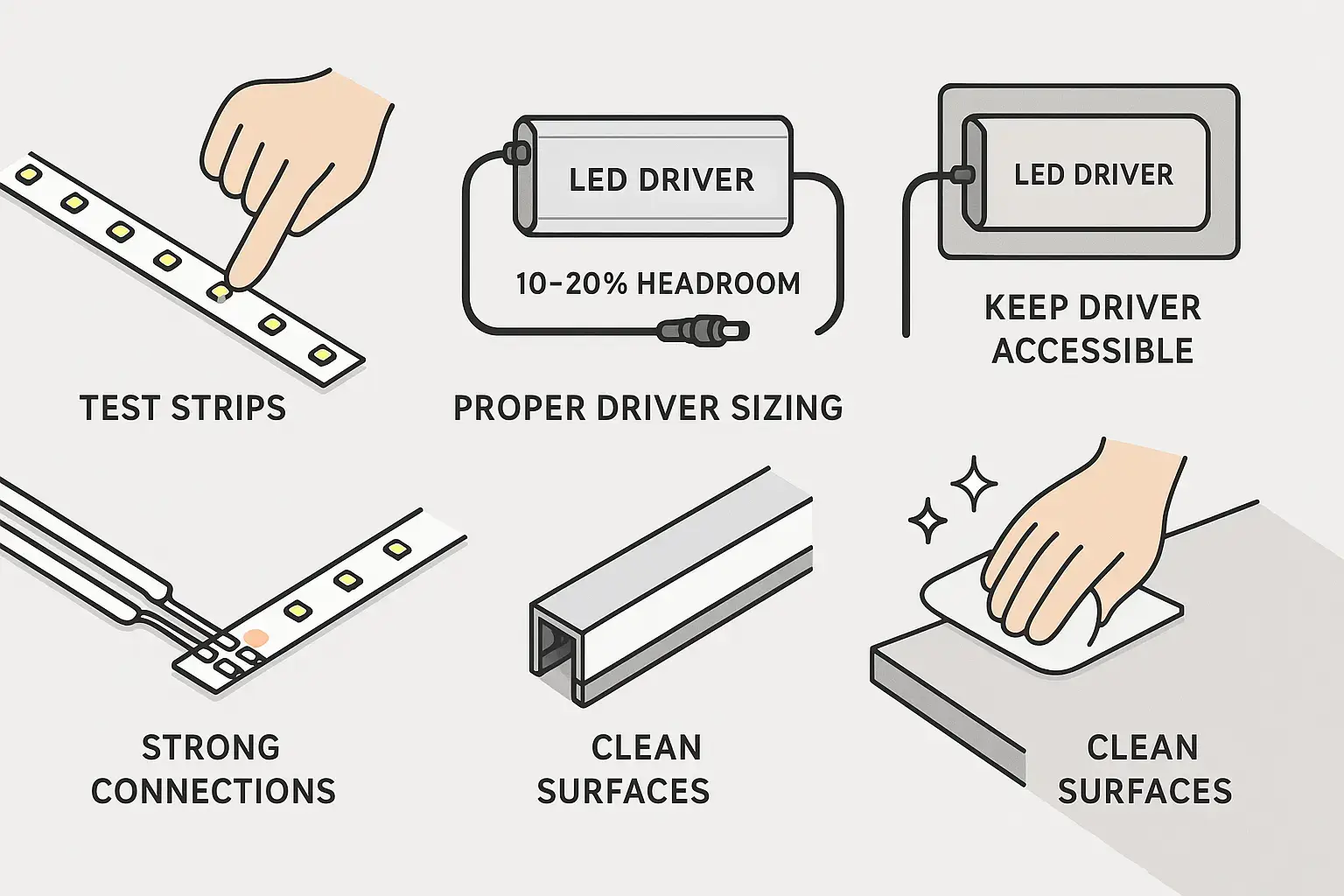
Practical Installation Advice
I always power strips on and test them before mounting. This ensures there are no dead sections. I size drivers with 10–20% headroom. For example, a 100W load should use a 120W driver. This prevents overheating.
Drivers must stay accessible. I once saw a ceiling closed over a driver. It failed later, and the ceiling had to be opened. I now place drivers in cabinets or service panels.
For connections, I use solder or quality locking connectors. Cheap clips loosen and cause flicker. I also clean all surfaces with alcohol before applying adhesive strips. Dust or grease makes adhesive fail.
These steps take little extra time. But they prevent callbacks, save money, and keep clients happy.
Conclusion
LED strips are flexible and low cost, but fragile. LED profiles are stronger, cleaner, and longer-lasting. Avoiding small mistakes ensures professional results and satisfied clients.
FAQ
Q1: Do LED strips need aluminum profiles?
A1: Yes. Profiles improve heat dissipation, protect the strips, and create a smoother, more professional lighting effect.
Q2: Why is my LED strip overheating?
A2: Overheating happens when strips are installed without aluminum profiles, powered by the wrong driver, or run at maximum brightness without proper cooling.
Q3: Can I install LED strips without a diffuser?
A3: Yes, but the LEDs will be visible and create harsh glare. A diffuser is recommended for kitchens, living rooms, and other visible areas.
Q4: What’s the most common mistake when installing LED profiles?
A4: The most common mistake is choosing the wrong profile size or cutting poorly, which leads to gaps and uneven light output.
Q5: Are LED profiles worth the extra cost?
A5: Yes. Profiles extend LED lifespan, improve cooling, and create a cleaner finish. The upfront cost pays off in long-term durability and appearance.

